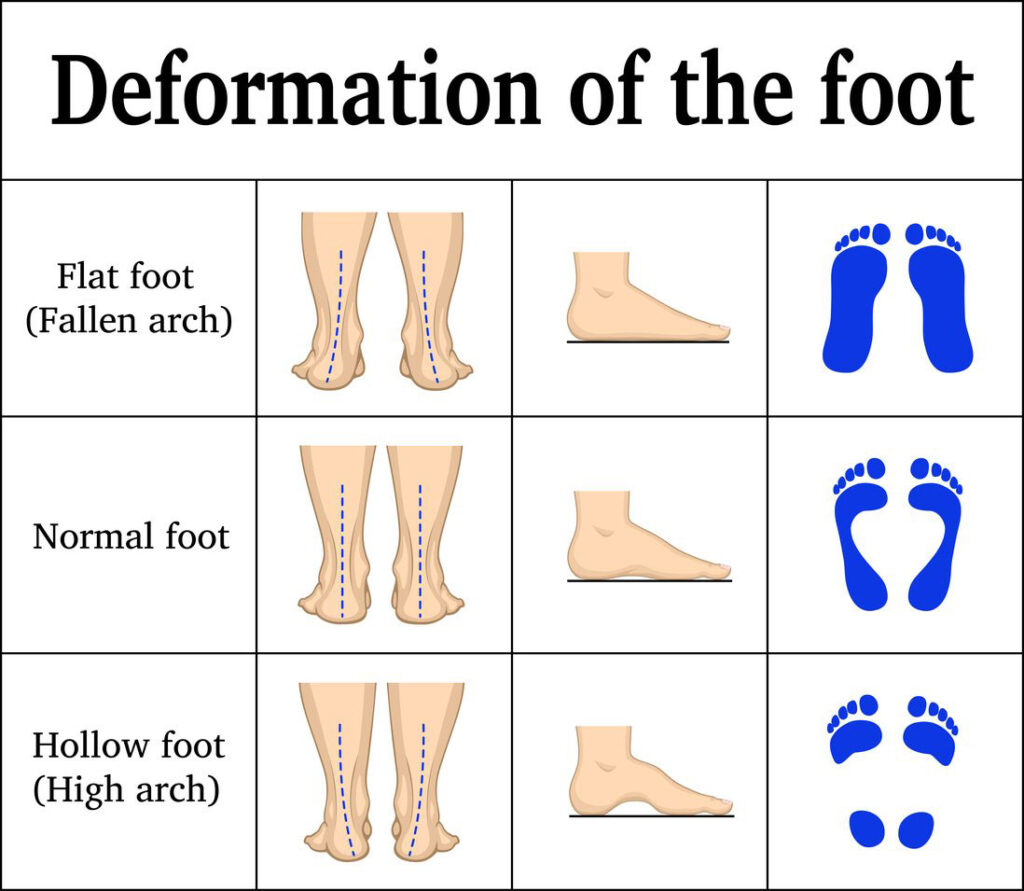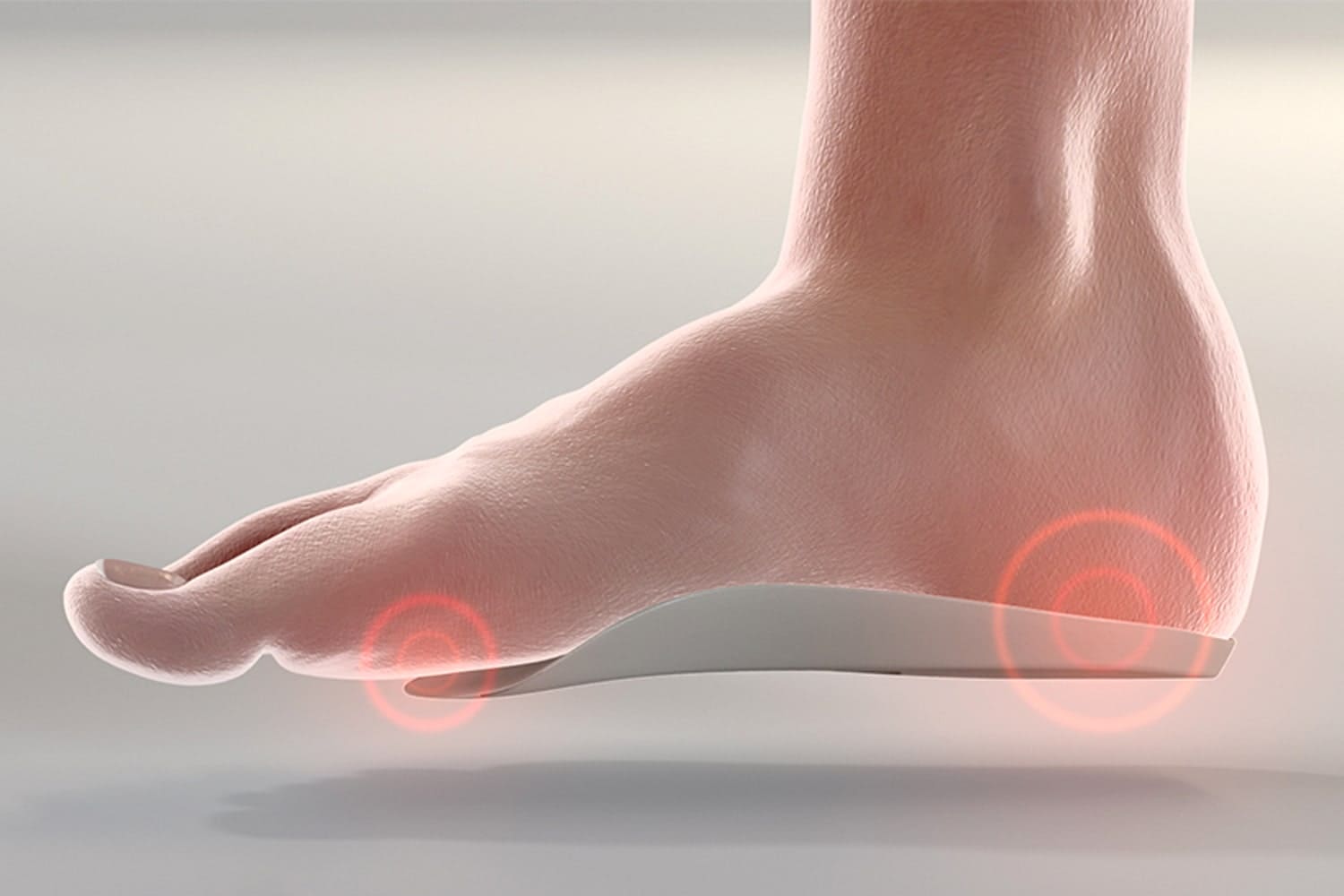Uncover empowering solutions for Leg Length Discrepancy (LLD) with our comprehensive guide. Dive into the causes, effects, and personalized treatment plans designed to restore balance and enhance your mobility.

Introduction
Leg Length Discrepancy (LLD) is a condition that goes beyond a simple difference in leg lengths, affecting individuals in profound ways. Whether structural or functional, LLD can significantly impact one’s gait, posture, and overall quality of life. This guide delves into the origins, implications, and management strategies for LLD, emphasizing the importance of a personalized approach to treatment. Join us as we explore how to navigate this condition, aiming for a future where every step is in harmony with your body’s natural balance.
Table of Contents
Origins of Leg Length Discrepancy
Some individuals are born with legs of different lengths, a result of genetic factors or developmental anomalies during fetal growth, leading to uneven bone growth.
Innate Differences
Injuries to Growth Plates
The growth plates, located near the ends of children’s bones, are crucial for bone development. Damage to these areas, for instance through fractures, can interrupt normal growth, causing one leg to grow longer or shorter than the other.
Conditions such as osteomyelitis, an infection of the bone, or arthritis, which causes joint inflammation, can impact the growth and shape of leg bones. These diseases can either hasten or impede growth in the afflicted leg.
Illness
Trauma
Significant injuries, particularly those involving leg bone fractures, can result in leg length differences. This may happen if a bone heals in a shortened state or if the injury impacts a growth plate in a child, altering normal growth patterns.
Impact on Movement and Posture
Adaptive Gait Changes
People with LLD often adjust their walking patterns to cope with the imbalance. This might include developing a limp to reduce the time spent on the shorter leg or toe-walking to artificially extend the shorter leg’s reach. The type and extent of these adaptations can vary widely, depending on the degree of discrepancy and the person’s physical condition.
Increased Strain on the Body
The body’s efforts to counterbalance the difference in leg length can lead to additional pressure on several joints and muscle groups, especially affecting the lower back, hips, knees, and ankles. This extra strain can lead to discomfort and pain, which may become more pronounced with activities like standing, walking, or running for extended periods.
Musculoskeletal Consequences Over Time
Persistently adjusting to an uneven gait can cause long-term muscular imbalances, potentially leading to or worsening conditions such as spinal curvature (scoliosis), joint degradation, and chronic pain. The altered weight distribution and biomechanics can hasten the wear and tear on joints and the spine.
Broader Health Implications
Ongoing Leg Length Discrepancy and its compensatory effects can also lead to broader health challenges, including reduced mobility, difficulty with daily tasks, and a heightened risk of falls and related injuries.
Approaches to Management
For minor leg length differences, specially designed insoles or shoe lifts can be a practical solution. These devices can be customized and placed inside the shoe of the shorter leg to help achieve a more balanced stance, significantly easing lower body strain and improving the gait. They are adaptable to the individual’s specific needs, considering the discrepancy’s magnitude and their activity level.
Footwear Adjustments and Orthotic Solutions

Targeted Physical Therapy
This strategy focuses on exercises and techniques aimed at strengthening the body, enhancing flexibility, and increasing the range of motion. The goal of physical therapy for Leg Length Discrepancy is to correct muscle imbalances that the discrepancy may have caused, helping to relieve pain and prevent additional musculoskeletal problems. Treatment may include stretching, muscle strengthening exercises, and hands-on therapy.

For more pronounced cases of Leg Length Discrepancy, surgery might be an option. Techniques include lengthening the shorter leg through gradual stretching with the help of external or internal devices, or shortening the longer leg by removing a bone segment. These surgical approaches are complex, necessitating a thorough evaluation of risks and benefits and a significant recovery time.
Surgical Interventions

Each management strategy should be customized to fit the individual’s unique situation, including the severity of their Leg Length Discrepancy and their general health and lifestyle preferences.
Necessity of Expert Evaluation and Customized Care Strategies
Expert Evaluation
For effective management of Leg Length Discrepancy (LLD), a precise diagnosis is paramount. This involves distinguishing between structural and functional types of LLD and determining the exact difference in leg lengths. Techniques like X-rays or MRI scans are employed to measure bone lengths and alignments accurately, while a detailed examination of the individual’s walking pattern can reveal the impact of the discrepancy on their movement and posture. Early detection and precise diagnosis are crucial for the successful treatment of Leg Length Discrepancy.
Customized Care Strategies
Tailoring the treatment plan to the individual’s specific needs is vital. Variables such as the person’s age, level of physical activity, and general health play a crucial role in selecting the most appropriate treatment method. In the case of children, it’s important to consider their growth trajectory, as the leg length difference may evolve, necessitating periodic adjustments to the treatment approach. For adults, factors including lifestyle and existing health conditions are considered to maximize treatment effectiveness.
Ongoing Assessment
Continuous evaluation is particularly critical for growing children, as changes in leg length discrepancy can occur with growth spurts. Treatment plans may need to be modified accordingly. In adults, regular check-ups are important to evaluate the success of the treatment plan and to make any necessary adjustments.
Comprehensive Treatment Methods
Addressing LLD effectively often involves a blend of therapeutic options, including the use of orthotic devices, engagement in physical therapy, and, in some cases, surgical intervention. A collaborative effort from a team of healthcare professionals, including orthopedic surgeons, podiatrists, and physical therapists, is essential for delivering all-encompassing care.
Living with Leg Length Discrepancy: Real Stories of Adaptation and Success
Leg Length Discrepancy (LLD) is a journey unique to each individual it touches. Beyond the clinical definitions and treatment plans lies a world of personal stories, each filled with challenges, adaptations, and triumphs. Here, we share the experiences of those who have navigated the complexities of LLD, offering insights into their paths toward a balanced and fulfilling life.
Emma’s Story: Finding Balance Through Orthotics
Emma was diagnosed with a mild structural LLD during her teenage years, a discovery that explained her frequent trips and falls. Initially disheartened, she found hope through customized orthotic insoles. “The difference was night and day,” Emma recalls. “I went from being the ‘clumsy’ one to joining the track team. My insoles were my secret weapon.” Emma’s journey highlights the power of simple solutions and the importance of personalized care.
Alex’s Journey: Strength Through Physical Therapy
For Alex, a functional LLD stemming from a childhood injury led to chronic back pain in adulthood. Physical therapy became his sanctuary. Through targeted exercises and dedicated practice, Alex not only alleviated his pain but also corrected his gait. “Physical therapy taught me about my body’s resilience,” he shares. “I learned that with patience and effort, balance is within reach.”
Jordan’s Triumph: Overcoming Obstacles with Surgery
Jordan’s significant structural LLD required surgical intervention, a prospect that filled him with both hope and anxiety. The decision to undergo limb lengthening was not made lightly, but the outcome was life-changing. “The recovery was tough, but every step I took towards equal leg length felt like a step towards reclaiming my life,” Jordan reflects. His story is a testament to the advances in medical science and the courage of those who choose surgery as their path to balance.
Mia’s Adaptation: Embracing Life with LLD
Mia’s LLD diagnosis came later in life, and she opted for a non-surgical management approach, incorporating lifestyle adjustments and shoe modifications. “I’ve learned to listen to my body and make adjustments as needed,” Mia says. “Living with LLD has taught me adaptability and self-compassion.” Her experience underscores the importance of embracing one’s journey, with all its imperfections.
The Collective Wisdom
These stories, each unique in their challenges and solutions, share a common thread of resilience and adaptability. Living with LLD is not just about the physical adjustments but also about the mental and emotional journey towards acceptance and empowerment. The individuals behind these stories have not only adapted to their circumstances but have also thrived, proving that a balanced and active lifestyle is indeed achievable with LLD.
Their journeys offer hope and motivation to others facing similar challenges, reminding us that while the path may be difficult, it is also dotted with victories, both big and small. Through sharing these real-life experiences, we aim to build a community of support and encouragement, where every individual with LLD can find their own version of success and balance.
FAQ Section
What is Leg Length Discrepancy (LLD)?
LLD is a condition where there is a noticeable difference in the lengths of an individual’s legs. This can be due to structural differences in the bones or functional issues caused by alignment or muscle imbalances.
What causes Leg Length Discrepancy?
LLD can stem from a variety of causes, including congenital factors, growth plate injuries, diseases affecting bone growth, or trauma to the leg.
How does LLD affect gait and posture?
Individuals with LLD may experience compensatory changes in their walking pattern, such as limping or toe-walking, to mitigate discomfort. This can lead to increased stress on the lower back, hips, knees, and ankles, and over time, contribute to musculoskeletal issues.
What are the treatment options for LLD?
Treatment varies based on the severity of the discrepancy and can range from insoles and shoe modifications to targeted physical therapy and, in more significant cases, surgical interventions.
Why is a professional diagnosis important for LLD?
An accurate diagnosis is crucial for determining the type and extent of LLD, which informs the development of a personalized treatment plan. Advanced diagnostic tools and a thorough clinical evaluation are essential components of this process.
Conclusion
Leg Length Discrepancy presents unique challenges, but with the right approach, it’s possible to achieve balance and improve mobility. Understanding the underlying causes, recognizing the impact on the body, and exploring comprehensive treatment options are key steps towards managing LLD effectively. Embracing a tailored treatment plan, guided by professional expertise, can lead to significant improvements in comfort, function, and quality of life. As we journey through the complexities of LLD, remember that each step forward is a step towards achieving a balanced and healthy future.











Hello! I could have sworn I’ve visited this website before but after browsing through
some of the posts I realized it’s new to me. Nonetheless, I’m definitely happy I discovered
it and I’ll be bookmarking it and checking back often!
Great article! We will be linking to this particularly great content on our
website. Keep up the good writing.
I don’t even know how I ended up here, but I thought this post was great.
I don’t know who you are but certainly you are going to a famous blogger if you aren’t
already 😉 Cheers!
You ought to be a part of a contest for one of the finest blogs on the web.
I am going to highly recommend this web site!
Informative article, exactly what I needed.
You are so cool! I do not suppose I have read a single thing like that before.
So nice to discover another person with unique
thoughts on this issue. Really.. thank you for starting this up.
This web site is something that is required on the internet, someone with
a little originality!
Hello, all the time i used to check blog posts here in the early hours in the break of
day, since i enjoy to find out more and more.
This post offers clear idea for the new users of blogging,
that truly how to do running a blog.
Everyone loves what you guys are usually up too.
Such clever work and exposure! Keep up the
good works guys I’ve included you guys to my blogroll.